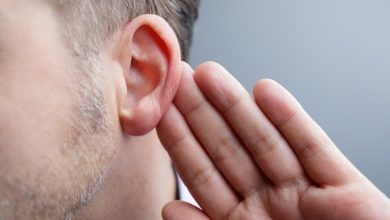Steps to Overcoming Anxiety – Dr. Curtis Cripe

Anxiety is a common mental health condition that affects millions of people worldwide. It is a feeling of fear or worry that can be triggered by various situations or events. While anxiety can be a normal and healthy response to stress, experts like Dr. Curtis Cripe say it can become problematic when it starts to interfere with a person’s daily life. In this article, we will explore the steps to overcoming anxiety.
Step 1: Understanding Anxiety
The first step in overcoming anxiety is to understand what it is and how it affects you. Anxiety can be a complex condition that manifests in different ways, and it is crucial to know the type of anxiety you are experiencing. The most common types of anxiety are generalized anxiety disorder, panic disorder, social anxiety disorder, and specific phobias.
Step 2: Identifying Triggers
Once you understand your anxiety, it’s essential to identify the triggers that make it worse. Some common triggers include stressful situations, certain people or places, and specific events. Identifying these triggers will help you develop coping mechanisms and avoid situations that may cause anxiety.
Step 3: Practicing Self-Care
Self-care is critical in managing anxiety. It includes getting enough sleep, eating a healthy diet, and exercising regularly. Additionally, engaging in activities you enjoy, such as hobbies, can help reduce anxiety and improve your mood.
Step 4: Seeking Professional Help
While self-care can be helpful in managing anxiety, seeking professional help is often necessary for long-term relief. A mental health professional can offer therapy, medication, or a combination of both to manage anxiety symptoms effectively. There are several types of therapy, including cognitive-behavioral therapy, which can help you identify negative thoughts and behaviors and replace them with positive ones.
Step 5: Practicing Mindfulness
Mindfulness is a technique that involves paying attention to the present moment without judgment. It can be helpful in managing anxiety by reducing stress and increasing feelings of calmness and relaxation. Mindfulness can be practiced through meditation, deep breathing, and yoga.
Step 6: Building a Support System
Having a support system is crucial in managing anxiety. This can include family, friends, or support groups. Support systems can provide encouragement, guidance, and a safe space to share your experiences and feelings.
Step 7: Setting Realistic Goals
Setting realistic goals can help you manage anxiety by giving you a sense of control and accomplishment. It’s essential to break down larger goals into smaller, achievable steps. Celebrating each step along the way can help boost your confidence and reduce feelings of anxiety.
Step 8: Avoiding Unhealthy Coping Mechanisms
Unhealthy coping mechanisms, such as alcohol or drug use, can worsen anxiety symptoms in the long run. These behaviors may provide temporary relief, but they can lead to addiction and more severe mental health issues. It’s crucial to find healthy coping mechanisms and seek help if you are struggling with substance abuse.
In conclusion, anxiety can be a challenging condition to manage, but it’s not impossible. By understanding anxiety, identifying triggers, practicing self-care, seeking professional help, practicing mindfulness, building a support system, setting realistic goals, avoiding unhealthy coping mechanisms, making lifestyle changes, and practicing patience, you can take





